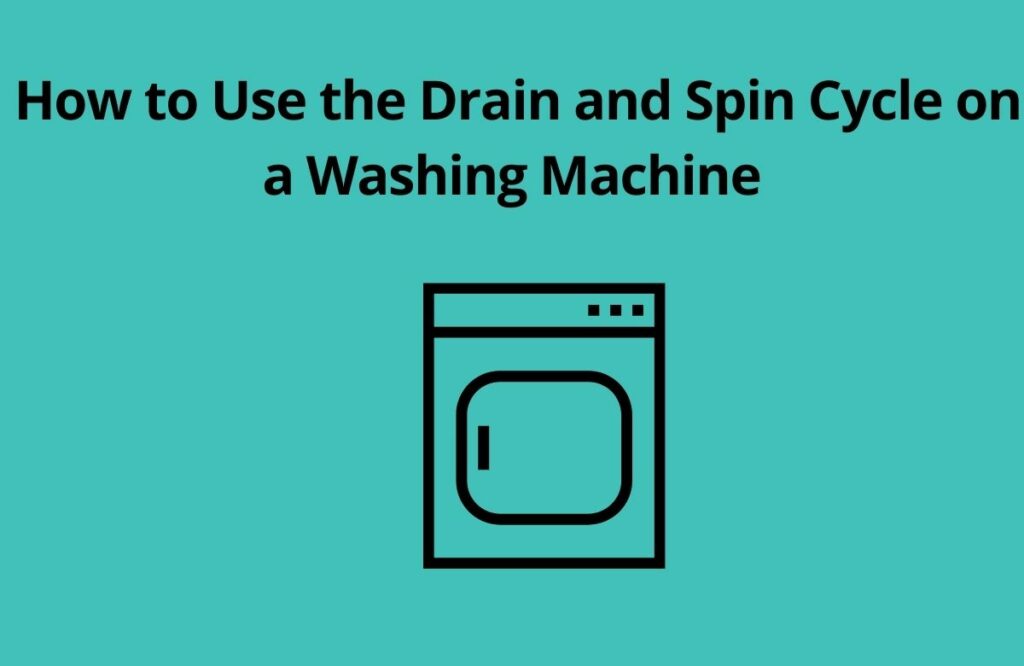Drain and spin are two important functions on a washing machine. Drain removes the water from the wash tub, and spin wrings the clothes dry. The water is drained through a hose that goes into the sink or the drain pipe. The spin cycle is important because it removes most of the water from the clothes, which makes them easier to dry. Some washing machines have a special cycle for spin only, which is useful for drying delicate items that shouldn’t be washed.
Table of Contents
1. The Drain and Spin Cycle on a Washing Machine
The drain and spin cycle on a washing machine are two separate but important functions that are used to clean clothes. The drain function removes the dirty water from the washing machine, while the spin function uses centrifugal force to remove the water from the clothes.
2. What Does the Drain and Spin Cycle Do on a Washing Machine?
The drain and spin cycle on a washing machine do three important things: they remove the dirty water from the washing machine, they remove the water from the clothes, and they dry the clothes. The drain function removes the dirty water from the washing machine, while the spin function uses centrifugal force to remove the water from the clothes. The final step, drying the clothes, is accomplished by using hot air to evaporate the water that was removed by the spin function.
3. How to Use the Drain and Spin Cycle on a Washing Machine

To use the drain and spin cycle on a washing machine, first make sure that the washing machine is switched on. Next, add your clothes to the washing machine and select the appropriate cycle. Once the cycle has started, press the “Drain” button to activate the drain function. Once the dirty water has been drained, press the “Spin” button to activate the spin function. The spin function will use centrifugal force to remove the water from the clothes, and will also dry them.
4. What Happens During the Drain and Spin Cycle on a Washing Machine
The drain and spin cycle on a washing machine includes three steps: draining, spinning, and drying. During the draining step, the dirty water is removed from the washing machine. During the spinning step, the water is removed from the clothes using centrifugal force. During the drying step, hot air is used to evaporate the water that was removed by the spin function.
5. What Are the Benefits of the Drain and Spin Cycle on a Washing Machine?
The benefits of using the drain and spin cycle on a washing machine are that it cleans clothes more effectively than if they were just washed without using the cycle, it saves time because it completes all three steps of cleaning in one cycle, and it saves energy because it uses less hot air than if the clothes were dried separately.
6. How to Troubleshoot Problems with the Drain and Spin Cycle on a Washing Machine
If you are having problems with the drain and spin cycle on your washing machine, there are a few things you can do to troubleshoot them. First, make sure that your washing machine is switched on and that it is plugged in properly. Next, check to see if there is any clogging in either of the hoses that lead to or from the washing machine. If there is clogging, try clearing it with a plunger. If that does not fix the problem, you may need to call a technician to examine your washing machine.
FAQs About the Drain and Spin Cycle on a Washing Machine
Here are some frequently asked questions about the drain and spin cycle on a washing machine:
1. What does “Drain” mean on a washing machine?
The “Drain” button on a washing machine activates the drain function, which removes dirty water from the machine.
2. What does “Spin” mean on a washing machine?
The “Spin” button on a washing machine activates the spin function, which uses centrifugal force to remove water from clothes.
3. What happens during the drain and spin cycle?
The drain and spin cycle includes three steps: draining, spinning, and drying. During draining, dirty water is removed from the washing machine. During spinning, water is removed from clothes using centrifugal force. During drying, hot air is used to evaporate the water that was removed by spinning.
4. Can I use just the drain or just the spin cycle on my washing machine?
No, you cannot use just the drain or just the spin cycle on your washing machine. The drain and spin cycle work together to clean clothes more effectively than if they were just washed without using this cycle.
Similar Questions
What is the difference between a front-loading and top-loading washing machine?
A front-loading machine has a horizontal axis, while a top-loading machine has a vertical axis.
What is the difference between a standard load and a large load of laundry?
A standard load is usually 2-3 pounds of laundry, while a large load is usually 5-8 pounds of laundry.
How do I use the self-cleaning cycle on my washing machine?
To use the self-cleaning cycle, first make sure that the machine is empty. Add 2 cups of bleach to the bleach dispenser and run the self-cleaning cycle.
What are some common causes of laundry problems, and how can I troubleshoot them?
Some common causes of laundry problems are: overloaded machines, incorrect water levels, detergent buildup, and clogged filters.
How do I know when my washing machine needs to be serviced?
If your washing machine is not performing as it should, it may need to be serviced. You can call a technician to inspect your machine, or you can check the manufacturer’s website for more information.






